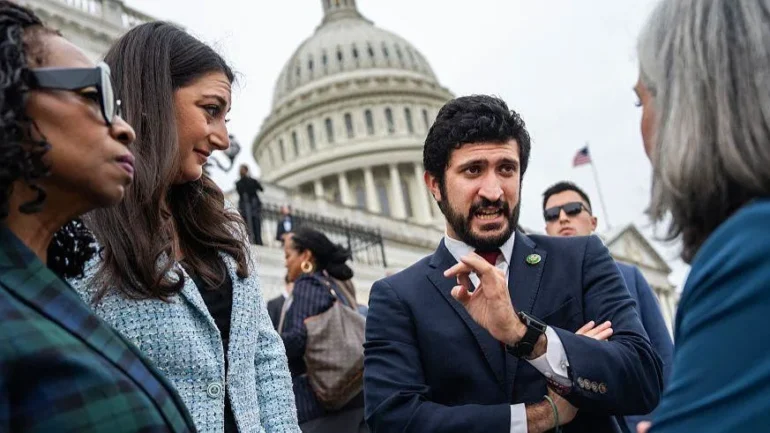The United States is on the brink of resolving its longest government shutdown in history, a 41-day stalemate that has disrupted federal services, delayed flights, and left hundreds of thousands of workers unpaid. On November 10, 2025, the Senate approved a stopgap funding bill by a 60-40 vote, extending government operations until late January 2026. This measure, backed by President Donald Trump, reverses mass firings of federal employees and guarantees back pay. However, the bill now heads to the House of Representatives, where a vote is expected as early as Wednesday, November 12. House Speaker Mike Johnson has urged lawmakers to return to Washington amid ongoing travel chaos. While Republicans hold a slim majority, several obstacles could complicate passage. Here are four key challenges that might delay or derail the process.
The Healthcare Subsidy Standoff
A major flashpoint in the shutdown has been the renewal of tax credits that subsidize health insurance for about 24 million Americans, originally expanded during the COVID-19 era. These subsidies are set to expire at the end of December 2025, potentially causing premiums to surge and creating political fallout for Republicans ahead of the 2026 midterm elections.
Democrats pushed hard to attach an extension to the funding bill, but Senate Republicans only agreed to a separate vote on the issue in mid-December—no guarantee of success. House Republicans, led by Speaker Johnson, have not committed to allowing such a vote in their chamber. Instead, they are considering reforms like income caps for eligibility and directing funds straight to individuals rather than insurance companies, though details remain vague.
This reluctance carries risks. Even some conservatives, like Georgia Representative Marjorie Taylor Greene, have warned against letting premiums spike, breaking from Trump’s stance. If Republicans block the extension, Democrats could seize on it as a campaign weapon, accusing them of betraying working families. As Texas Democrat Greg Casar, chair of the House Progressive Caucus, put it, failing to address healthcare costs would be a “betrayal of millions of Americans counting on Democrats to fight for them.”
Divisions Within the Democratic Party
Democrats, out of power in both chambers, have shown cracks in their unity during this crisis. Recent election wins in Virginia, New Jersey, and New York City boosted their momentum, but the shutdown has highlighted tensions between progressive and centrist factions.
Progressives are outraged at the Senate deal, viewing it as a surrender to Republicans. Vermont Senator Bernie Sanders called it a “horrific mistake,” while California Governor Gavin Newsom labeled it “surrender.” In the House, left-leaning members like Casar criticize the agreement for not tackling healthcare costs head-on.
However, moderate Democrats in conservative districts may defect to support the bill. Maine’s Jared Golden, who represents a Trump-leaning area and recently announced he won’t seek re-election, has indicated he’ll likely vote yes. Texas Representative Henry Cuellar echoed this sentiment on social media, urging to “put country over party” and reopen the government. Such crossovers could provide Republicans the votes they need, but they risk deepening Democratic infighting and weakening the party’s leverage on future issues.
Securing Republican Unity
Republicans control the House with 219 seats to Democrats’ 213, meaning they can afford only two defections to pass the bill without Democratic help. While most are expected to back the Trump-endorsed package, fiscal conservatives pose a threat.
Kentucky Representative Thomas Massie, a consistent opponent of short-term funding extensions, is likely to vote no. In the Senate, his fellow Kentuckian Rand Paul was the lone Republican dissenter, citing the bill’s failure to curb the federal debt, which is projected to grow by $1.8 trillion annually atop the existing $38 trillion. The conservative House Freedom Caucus echoes this, demanding a longer-term budget with deeper spending cuts.
If more than two Republicans bolt—perhaps swayed by concerns over unchecked spending—the bill could fail, forcing further negotiations and prolonging the shutdown.
Travel Disruptions and Logistical Challenges
The shutdown’s ripple effects extend to lawmakers themselves, complicating their return to Washington. The House has been in recess since mid-September, with Johnson using the break to pressure Senate Democrats. Now, as he calls for an immediate return, travel woes loom large.
Air traffic controllers, unpaid during the impasse, have reported high sickness rates, leading to a 6% reduction in U.S. flights starting November 11. Severe weather, including record-cold temperatures and heavy snow in the Midwest’s Great Lakes region, has exacerbated delays at major airports. These issues mirror the frustrations faced by everyday Americans, from delayed food aid to airport bottlenecks.
With the earliest House vote set for Wednesday afternoon, any further disruptions could push back the timeline, extending the shutdown by days and heightening public frustration.
Looking Ahead: A Fragile Path to Resolution
As the bill advances, the coming days will test congressional resolve. President Trump has pledged to sign it, stating, “We’re going to be opening up our country very quickly.” Yet, the healthcare debate lingers, with a promised Senate vote in December offering a potential battleground. Senate Appropriations Chairwoman Susan Collins supports extending subsidies with reforms, but bipartisan agreement remains elusive.
The shutdown, sparked by Democrats’ push for healthcare negotiations, has exposed deep partisan divides and intra-party tensions. Its end would provide relief to federal workers and restore services, but without addressing underlying issues like debt and subsidies, similar crises could recur. For now, all eyes are on the House, where these four obstacles could determine whether the “long national nightmare,” as Speaker Johnson called it, finally concludes.
